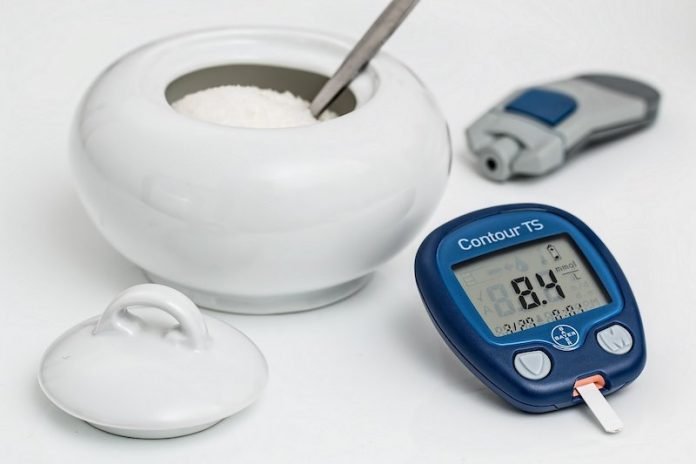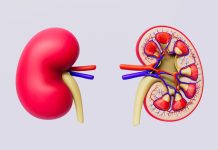
Diabetes used to be an uncommon disease, but during the latter part of the 20th century, it has become more common and now one in ten Americans have developed this lifelong, progressive condition.
Fortunately, a diagnosis doesn’t always lead to morbidity and mortality like it used to, thanks to the discovery of insulin.
University of Michigan Health’s Israel Hodish, M.D., Ph.D., professor of metabolism, endocrinology and diabetes with a focus on type 2 diabetes management, discusses how the drug works, its history and why it’s so expensive.
What is insulin, and what does it do in your body?
Hodish: The endocrine system is like the FBI of the body. It watches everything and tries to keep everything in balance, or homeostasis.
Hormones like insulin typically serve many functions, not just one. Insulin is a protein secreted from the abdomen, the pancreas, and among its multiple functions it helps managing blood sugar.
When our blood sugar is high from the foods we eat, we secrete more insulin to try and counteract those high levels.
Sugar isn’t bad – our cells need sugar. In normal situations, we get sugar in similar parts from what we eat and what we make in our liver.
Insulin helps sugar in our blood get into many cells in the body. The main tissues that use insulin are liver, fat and muscle cells.
Most people can keep their blood sugar levels stable because of a balance of sugar in our food, sugar made by our liver and the hormones that we secrete to keep it stable.
However, people with diabetes of any type, have difficulty keeping their blood sugar stable because in insufficient amount of insulin secreted from their pancreas, sugar stays in the blood instead of entering cells.
When the sugar stays in the blood and blood sugar levels remain high over a period of time, this can cause serious health issues and increase a patient’s risk of heart disease, kidney disease, eye disease, other organs’ damage and importantly premature death.
What’s the relationship between insulin and diabetes?
Hodish: Before insulin, diabetes was a fatal disease. It mostly affected children, and they would die a few months later. Physicians only knew how to diagnose it by tasting children’s urine. If the urine was sweet, the child had diabetes.
They didn’t know how to treat it, though, until investigators in Toronto, Canada were able to extract material from an animal’s pancreas and inject it into children. They called it insulin.
Later on, it was found that the pancreas contained a limited number of cells called beta cells that are specialized for making insulin.
We learned that the destruction of the cells by inflammation or too much insulin requirements compared to what the cells can produce, cause diabetes.
However, insulin isn’t always as simple as you make enough, or you don’t. Healthy people secrete different amounts of insulin based on their biology and the amounts changes over time.
For example, pregnant women and adolescent need more insulin and secrete more. In some areas of the world where there’s less food, people survive by partial insensitivity to some of their insulin functions.
During the second half of the 20th century, the weight of the population gradually increased and with that, its insulin needs.
Many people become resistant to part of the functionalities of the insulin hormone and thus need to secrete more of it to maintain normal blood sugar level.
But in the Western world, about one in five people with this kind of selective insulin resistance can’t produce enough insulin to meet the body needs and consequentially become insulin deficient. When there is not enough insulin, blood sugar goes up and type 2 diabetes starts.
Most people that are overweight don’t have diabetes. A person doesn’t have to be obese to develop diabetes, but if they weigh a little more than their ancestors, like their parents, then they are more susceptible.
In many cases, the pancreas can’t keep up. We know lifestyle choices play into the development of diabetes, but so does genetics, age and weight.
It’s nobody’s fault that this happens; diabetes isn’t anyone’s choice. It’s not a punishment for being overweight.
How has the discovery of insulin changed the way someone can live with diabetes?
Hodish: Diabetes can affect many organs in the body and the main predictor of this organ damage is high blood sugar.
High blood sugar is a key indicator of someone with diabetes having complications later on or dying prematurely, and insulin helps balance these levels.
In fact, someone with diabetes who manages their blood sugar well on a regular basis can live as long as people without diabetes. If insulin therapy is needed, it can also be achieved if the right amount of insulin at the right times is taken.
This is a balancing act, though, because if given too much, the frightening side effect of insulin overdose is low blood sugar.
As we already know, people secrete different amounts of insulin and this varies throughout our lives, so it’s important to monitor blood sugar levels when taking insulin.
It doesn’t matter if my pancreas secretes 50 units of insulin and my friend’s pancreas secretes 500 units, if we do have diabetes and we do need to inject insulin, if we can keep a healthy glucose balance we will less likely to develop complications.
Insulin is one of the most dynamic therapies in medicine, our needs change constantly, so seeing patients three times a year to adjust their dose generally isn’t enough.
Research suggests that insulin doses may need to be adjusted as frequently as every few days. We now have technologies that automatically adjust doses for patients, and this is leading a transformation of insulin therapy.
This has been made possible with software that automates insulin doses adjustments when they need it between clinic appointments.
This technology is available for patients who use insulin pumps and for patients who use insulin injections.
Why is insulin so expensive?
Hodish: The patent for insulin was given as a gift to humanity by researchers who discovered it.
But making insulin requires a certain expertise, and it’s expensive because insulin can’t be made chemically in a test tube — it has to be made from living cells.
Not many companies are able to commercialize insulin because of how specialized and challenging it is, and this has opened the door for a monopoly on the product. And the higher the dose, the more expensive the insulin is.
In the U.S., there’s no limit on pricing for insulin and insurance companies may not cover the entire cost.
The good news for now, though, is that there are different kinds of insulin and most patients can do just as well with less expensive kinds – they don’t necessarily need insulin analogs, or designer insulin molecules.
What’s your message for those living with diabetes?
Hodish: Many people don’t know that diabetes is a progressive condition. Over time, people secrete less and less insulin despite treatment.
This is expected. There are seven different classes of diabetes medications other than insulin, and at first, these can often be enough to give your body what it needs to be in balance.
But eventually, a significant fraction of patients with diabetes will need insulin injections, and it’s OK. It’s not the patient’s fault if they need insulin – it’s the nature of the disease.
Blood sugar can stay high despite medications and for me, as a provider, what medication the patient takes doesn’t matter as long as their blood sugar level stays healthy so they can thrive and do as well as someone who doesn’t have diabetes.
Written by Jordyn Imhoff.
If you care about diabetes, please read studies about the cause of muscle loss in diabetes and findings of these two daily habits can reduce diabetes risk in older people.
For more information about diabetes and your health, please see recent studies about why some people have dangerous diabetes complications and results showing that prediabetes diagnosis not useful in older people.



